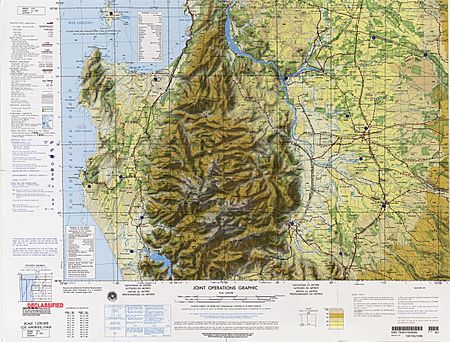Tavolevo River facts for kids
The Tavolevo River is a river in Chile. It is a tributary of the Biobío River, which means it flows into the Biobío River.
About the Tavolevo River
The Tavolevo River has two main rivers that flow into it, called tributaries. One is the Culenco River, which comes from the southeast, starting in the Nahuelbuta Range in the Catirai region. The other is the Nicodahue River, which flows north from the La Araucanía Region.
Where Does It Flow?
The Nicodahue River also has two smaller tributaries: the Esperanza River and the Maitenrehue River. All these rivers begin northwest of a city called Angol. Sometimes, people consider the Tavolevo River to be part of the Nicodahue River because they are so closely connected.
The Tavolevo River joins the Biobío River about 50 kilometers (about 31 miles) after the Nicodahue and Culenco Rivers meet. It flows into the Biobío River about 7 kilometers (about 4 miles) north of the town of Nacimiento.
Its History and Name
Right downstream from where the Tavolevo River meets the Biobío River, there used to be an old fort called Espirito Santo. The banks of the Tavolevo River were also famous for having a lot of gold, found in what are called "placer deposits."
Long ago, small, flat-bottomed boats could travel up the Tavolevo River for about 9 kilometers (about 5.6 miles) from where it met the Biobío River. The name "Tavolevo" comes from the Mapudungun language, which is spoken by the Mapuche people. It means "confluence," or "where rivers join together." This makes sense because many rivers come together to form the Tavolevo.
See also
 In Spanish: Río Tavolevo para niños
In Spanish: Río Tavolevo para niños


